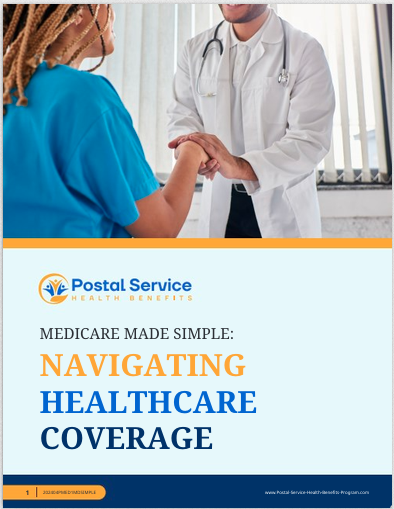Key Takeaways
-
Understanding the Postal Service Health Benefits (PSHB) program is crucial for USPS employees to make informed choices for 2025.
-
Comparing health plans based on coverage, cost, and compatibility with Medicare ensures you select the best option for your needs.
The PSHB Transition: What It Means for You
The Postal Service Health Benefits (PSHB) program has officially replaced the Federal Employees Health Benefits (FEHB) program for USPS employees and retirees in 2025. This significant shift introduces unique opportunities and challenges for managing your health coverage. If you’re wondering how to navigate this new system, you’re not alone. By comparing your options carefully, you can ensure your health and financial security.
Know Your Enrollment Options
Enrollment in the PSHB program opened during the 2024 Open Season, which ran from November 11 to December 13, and took effect on January 1, 2025. If you missed the Open Season, changes are only allowed during a Qualifying Life Event (QLE), such as marriage, birth, or a change in employment status.
Key Deadlines to Remember
-
Annual Open Season: Typically held from mid-November to mid-December every year.
-
Qualifying Life Events: These allow mid-year changes but require timely documentation.
Staying on top of these deadlines ensures you’re not stuck with a plan that doesn’t meet your needs.
Medicare Integration: A Game Changer
For Medicare-eligible USPS retirees and their family members, Medicare integration with PSHB plans is a defining feature. If you’re 65 or older and enrolled in Medicare Part A and Part B, you’ll benefit from enhanced coverage and potential cost savings.
How Medicare Affects Your PSHB Plan
-
Reduced Out-of-Pocket Costs: Many PSHB plans coordinate with Medicare to waive deductibles and lower copayments.
-
Prescription Drug Coverage: Medicare-eligible enrollees automatically receive drug coverage through a Medicare Part D Employer Group Waiver Plan (EGWP).
-
Part B Enrollment Requirement: Retirees and eligible family members must enroll in Medicare Part B unless they qualify for specific exemptions.
Being proactive about Medicare enrollment ensures you maximize these benefits without gaps in coverage.
Breaking Down Costs
Health plan costs can be overwhelming, but understanding the components helps you make smarter decisions. While PSHB plans offer a range of premiums, deductibles, and copayments, here are the general cost factors to keep in mind:
Premiums and Government Contributions
-
USPS employees and retirees benefit from substantial government contributions, which cover a large portion of premium costs.
-
Even with these contributions, plan premiums vary widely based on coverage levels and family size.
Deductibles and Out-of-Pocket Limits
-
Deductibles: These are the amounts you pay before your plan starts covering services. For 2025, these amounts can differ significantly across plans.
-
Out-of-Pocket Caps: The PSHB program sets annual caps on out-of-pocket expenses, providing financial protection in case of major medical events.
Compare plans with these cost components in mind to balance affordability and comprehensive coverage.
Evaluating Coverage Options
The PSHB program offers diverse plans tailored to meet the needs of USPS employees and their families. When comparing plans, prioritize coverage that aligns with your health needs.
In-Network vs. Out-of-Network Care
-
In-Network: Services are provided at lower costs by healthcare providers within your plan’s network.
-
Out-of-Network: These services often come with higher out-of-pocket costs.
Ensure your preferred doctors and specialists are in-network to avoid surprise expenses.
Prescription Drug Coverage
Prescription drug benefits vary widely between plans. If you take regular medications, compare formularies to ensure your prescriptions are covered affordably.
Supplemental Benefits
Many PSHB plans include extras like dental, vision, and hearing coverage. While these are valuable, weigh them against higher premiums to determine if they’re worth the added cost.
Tailoring Your Plan to Your Needs
Choosing the right plan involves more than comparing costs and coverage. Consider your unique situation and how your plan’s features align with your life.
For Families
If you’re covering dependents, prioritize plans with:
-
Affordable family premiums.
-
Comprehensive pediatric care and immunization coverage.
For Retirees
If you’re retired and eligible for Medicare, focus on:
-
Plans that integrate seamlessly with Medicare Parts A and B.
-
Low out-of-pocket caps to manage fixed retirement incomes.
For Chronic Conditions
If you or a family member has ongoing medical needs:
-
Look for plans with robust coverage for specialist visits and chronic condition management.
-
Ensure prescription drug coverage includes necessary medications.
The Importance of the Annual Notice of Change (ANOC)
Each year, your PSHB plan sends out an Annual Notice of Change (ANOC), detailing updates to premiums, benefits, and cost-sharing arrangements. Reviewing this document carefully ensures you’re aware of any changes affecting your coverage.
What to Look For
-
Premium Adjustments: Even small changes can add up over the year.
-
Benefit Changes: Check for added or removed services.
-
Network Updates: Ensure your preferred providers remain in-network.
Ignoring the ANOC can leave you unprepared for unexpected changes.
Leveraging Online Tools and Resources
Comparing PSHB plans doesn’t have to be daunting. Use online tools provided by the U.S. Office of Personnel Management (OPM) to:
-
Compare plan costs and benefits side by side.
-
Access detailed descriptions of each plan’s features.
-
Calculate estimated out-of-pocket expenses.
These resources streamline the decision-making process, saving you time and stress.
Common Pitfalls to Avoid
When selecting a PSHB plan, steer clear of these common mistakes:
Focusing Solely on Premiums
A lower premium doesn’t always mean better value. Factor in deductibles, copayments, and out-of-pocket caps for a comprehensive view of costs.
Ignoring Provider Networks
Selecting a plan without checking if your preferred providers are in-network can lead to unexpected expenses and limited care options.
Overlooking Prescription Drug Coverage
Failing to review a plan’s formulary might result in higher costs for essential medications.
Missing Enrollment Deadlines
Mark your calendar to ensure you don’t miss critical enrollment periods.
Staying Informed Throughout the Year
Health plans can change annually, making it essential to stay informed even after enrollment. Here are a few tips:
-
Attend Information Sessions: Many USPS locations host events to explain PSHB options.
-
Subscribe to Updates: Sign up for email notifications from OPM or your PSHB provider.
-
Review Plan Materials: Take time to read brochures and online resources for your plan.
Knowledge is your best tool for maximizing benefits and minimizing costs.
Why Comparing Plans Matters
Choosing a health plan is one of the most important decisions you’ll make each year. By comparing your options carefully, you can:
-
Ensure your plan meets your health needs.
-
Avoid unnecessary expenses.
-
Gain peace of mind knowing you’re covered.
Your Health, Your Choice
Don’t leave your health coverage to chance. Take the time to evaluate your options, ask questions, and make an informed decision that supports your well-being and financial stability.
Navigating the PSHB Landscape with Confidence
Selecting the right PSHB health plan for 2025 may seem overwhelming, but it doesn’t have to be. With a clear understanding of your options, costs, and coverage, you can confidently choose a plan that fits your unique needs. Remember, your health and financial security are worth the effort.






